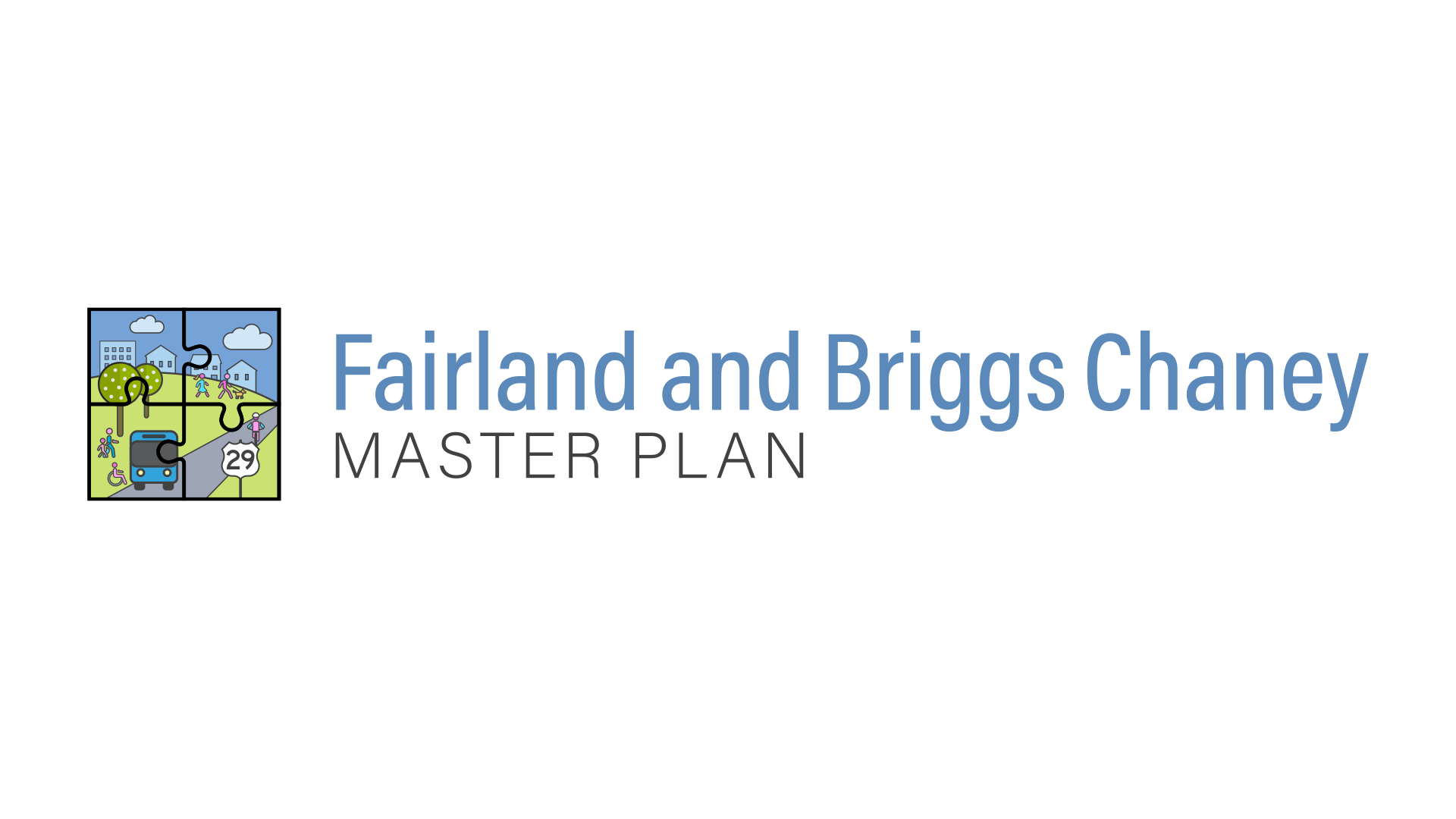
Plan recommending better access to public transportation, housing options, retail, and pedestrian connections along five-mile stretch of U.S. 29 corridor heads to County Council, County Executive for review
WHEATON, Md. – The Montgomery County Planning Board, part of The Maryland-National Capital Park and Planning Commission (M-NCPPC), approved the Montgomery County Planning Department’s Planning Board Draft of the Fairland and Briggs Chaney Master Plan at the May 25 Planning Board meeting. The draft plan will be transmitted to the County Council and the County Executive for public review and final County Council approval. There will be an opportunity for additional public comment on the plan with the County Council’s public hearing and work session review.
The Planning Board Draft lays out the plan’s renewed vision for a five-mile portion of the U.S. 29 (Columbia Pike) corridor, drawing from hundreds of public comments, conversations, ideas, and illustrations generated by visioning workshop participants and community stakeholders since summer 2021. The Planning Board held a public hearing on the plan in May 2023, and Montgomery Planning staff incorporated that public feedback into the plan’s Working Draft, which went through a series of live-streamed work sessions with the Planning Board for input and direction from Board members. The draft plan provides recommendations to support its five major goals of creating a more complete community, fostering corridor growth, promoting economic development, increasing housing opportunities, and improving connections between the natural and built environments.
“The Fairland and Briggs Chaney Master Plan will establish the vision for transformative activity-centered growth. It sets the stage for mixed-use housing and commercial developments in compact centers and for a more transit- and pedestrian-oriented U.S. 29 corridor that is less dependent on automobiles,” said Planning Board Chair Jeff Zyontz. “This plan’s zoning recommendations accommodate an evolving community that will be able to satisfy market demands in a manner that makes walking and biking commuting a reasonable choice.”
“This is one of the first opportunities to plan a community through the lens of the county’s new General Plan, Thrive Montgomery 2050, which aims to create places to live, work, and play that strengthen racial equity and social justice, economic competitiveness, and environmental resilience,” said Acting Planning Director Tanya Stern. “Past policy and planning decisions have had a negative impact on growth in East county, resulting in inequitable investments. This plan seeks to repair those inequities and set a new path for the Fairland and Briggs Chaney community. It recommends strategies for an improved quality of life and access to high-quality amenities, supports a stronger social network, and celebrates this plan area’s multi-racial and multi-cultural community.”
For more details about the plan, visit the Fairland and Briggs Chaney website where the approved Planning Board Draft will be posted soon.
Key Recommendation Themes of the Fairland and Briggs Chaney Master Plan:
- Establish an emphasis on community gateways and activity centers as compact, high-density mixed-use centers focused on frequent transit service; safe pedestrian movement; greater tree canopy and ‘cool’ surfaces at summer hot spots; and attractive community gathering spaces.
- Prioritize U.S. 29 as a ‘transit-first’ corridor that provides frequent, convenient regional connections from the plan area to Silver Spring, Washington D.C., and Howard County.
- Complete a continuous network of trails and paths connecting activity centers, neighborhoods, parks, open spaces, community facilities, and bus stops, both within and beyond the master plan area.
- Establish an East County Resilience Hub as a community center for daily community needs and a destination for reliable electricity, water, temporary shelter, food, indoor heating and cooling, social services, and fellowship during public emergencies.
- Support a healthy community food system that includes healthy grocery and dining destinations, farmers’ markets, and community gardens.
About the Fairland and Briggs Chaney Master Plan
The Fairland and Briggs Chaney Master Plan is an update to a portion of the 1997 Fairland Master Plan and will establish a clear vision for an equitable, just, and prosperous future for the Fairland community, mirroring the county’s long-term priorities, which include a vibrant economy, equity for all residents, and a healthy environment. The master plan boundary consists primarily of property and neighborhoods of Fairland and Briggs Chaney along the U.S. 29 Corridor from near Paint Branch on the south to Greencastle Road on the north. The update will examine and provide policies and recommendations on existing and future land uses and zoning, housing inventory and needs, transportation systems, historic preservation opportunities, area park facilities, and the environment.
This master plan will take cues from the equity framework in the update to the county’s General Plan, Thrive Montgomery 2050, which describes how places with equitable access to opportunity produce strong, successful communities. Goals of the Fairland and Briggs Chaney Master Plan include:
- Complete Community: Identify and correct past inequitable development policies to make the Fairland and Briggs Chaney communities more whole and connected by integrating centers of housing, retail, and office development with parks and open space to make 15-minute living a reality for as many people as possible.
- Resilient Economy: Promote economic development and job growth within the plan area and surrounding communities.
- Housing: Promote racial and economic diversity and equity in housing to help rectify past discriminatory housing policies in every neighborhood.
- Arts, Culture and Environment: Support arts and cultural institutions, through parks, open space and environment, recreational programming, and development, to celebrate our diversity, strengthen pride of place, and make the county more attractive and interesting.
- Corridor Growth and Connectivity: Promote and prioritize public and private investment along the Route 29 corridor and neighboring communities to leverage and attract future private investment in community facilities and redevelopment, including a safer, more comfortable network for walking, biking, and rolling that connects the corridor communities.